Catenatives (not to be confused with native cats)
When the first Europeans came to Australia, they were very confused by what seemed to them to be very odd wildlife. They gave many animals names that referred back to European animals, probably as a way to make sense of the new environment. Koalas, for a while, were known as ‘native bears’ – and the name ‘koala bear’ still lingers. There is a superficial resemblance, if you squint, and use a lot of imagination. Similarly, those early settlers saw another animal that reminded them of cats in appearance and behaviour. While we now call these animals quolls, the name ‘native cat’ still lingers (some environmentalists argue that Australians should keep quolls as pets, instead of cats – but that’s another story).
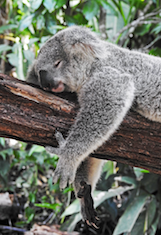
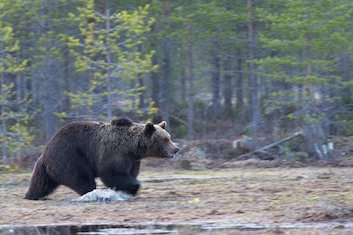
Australia’s first European settlers called koalas ‘native bears’ although the resemblance is not strong
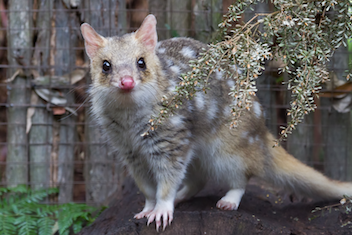
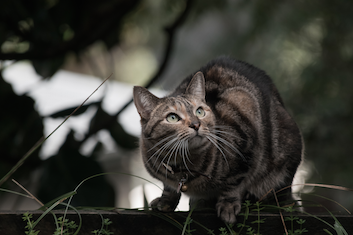
Australia’s first European settlers called quolls ‘native cats’ as the predatory marsupials reminded them of cats
Catenatives are a group of verbs that, in the same way quolls behave a bit like cats but aren’t, behave a bit like auxiliaries, but aren’t. Catenatives are also different from the modal (conditonal) verbs and quasimodals. Catenatives start a chain of verbs, with the following verbs in their infintive form or present participle form, or, in long chains, sometimes both types. The name catenative comes from the Latin verb for chain. If you’ve never heard of catenatives, don’t panic; the term has only been use for about the last 30 years (you probably just called these constructions verb phrases, without a special name for the first word).
Sometimes there is a significant difference in meaning between using an infintive after the catenative and using the present participle.
- I stopped to think.
- I stopped thinking.
(You could argue – or actually, I would argue – that the second example is not a catenative: that here, the verb stopped is followed by a noun (a gerund, or present participle acting as a noun) and that rather than being part of the action (a verb chain) thinking is the thing that has been stopped. It’s one of those grey areas; there is no definitive way to tell.)
What do catenatives do?
Catenatives create a chain of verbs. In the sentence
- We use a catenative when we want to start a chain of verbs
want is the catenative, starting a chain of two verbs (want + to start).

We use a catenative when we want to start a chain of verbs.
These are examples of the use of increasingly complex verb chains; the word in blue is the catenative verb and the rest of the chain is shown in bold:
- I intend finishing the project by Christmas. (A chain with one verb)
- I intend to try to finish by Christmas. (A chain with two verbs)
- He seemed to want to try helping to organise the festival. (A chain with four verbs)
- The quoll appears to want to run away as quickly as possible; it seems to know that the weather will start snowing in a few minutes. (Three catenative verbs; the last catenative uses the auxiliary will as it is future tense)
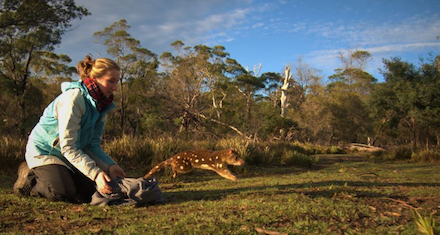
There are a number of words that we regularly use as catenatives:
- forget, get, hate, help, keep, like, manage, prefer, stop, try, want
and others that we use less often:
- appear, attempt, cease, chance, consider, continue, detest, endeavour, expect, fail, finish, forget, get, happen, hope, intend, regret, resent, risk, strive, tend
A common catenative error: try and . . .
In speech, Australians tend to mumble. We’ll say something that sounds like ‘I’ll try’n’finish that before Christmas’. I think this mumbling habit has led many people to think that they are saying and. Unfortunately, when they write the same sentence, their unclear speech leads them to write:
- I’ll try and finish that before Christmas.
but and is wrong. Try is a catenative and should be followed either by an infinitive, starting with to, or a present participle, ending in –ing.
- I’ll try to finish that before Christmas.
- I’ll try finishing that before Christmas.
Most of the time, we should be writing try to (something). Try and is an error I find reasonably often. Try to remember that!
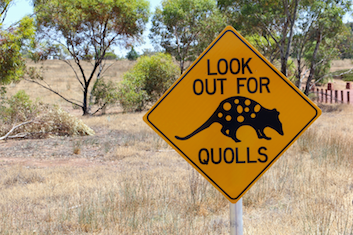
Try to remember to look out for quolls – our native cat – as well as wrongly used catenatives
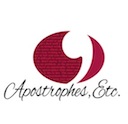
If you have found this post interesting, you can find a full index to my other posts on the index page. To be notified when I post a new topic, follow me on Facebook! If you have any particular questions you’d like me to answer in future posts, just send me a message. I’m always interested to learn what people think, and how you came across this site, so please post a comment.
If you think you would be interested in either my complete grammar course or an individual customised online course (particularly suited for people who don’t live in Melbourne), just click your preferred option.
3 comments on “Verbs: catenatives – starting verb chains”